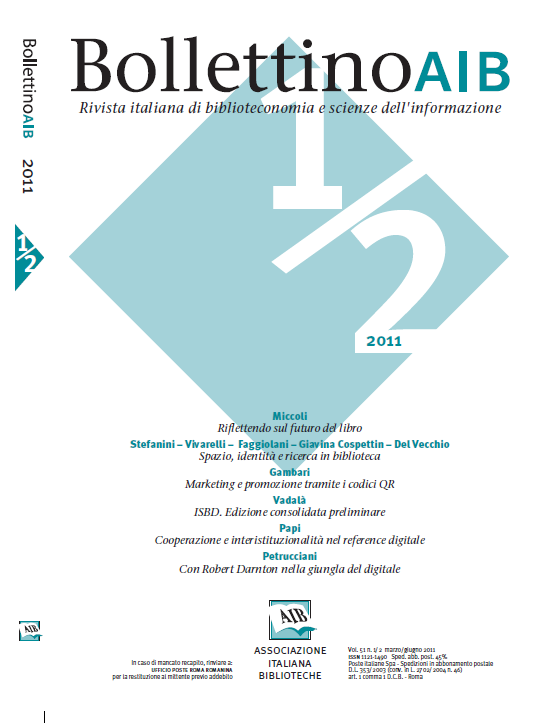Space, identity and research in libraries: a seminar in Paderno Dugnano
Main Article Content
Abstract
The identity of public library and its manifestation within the cultural and architectural space is a substantial topic for its theoretical relevance as well as for all the practical applications that can originate from this area of study. The publication of the book Biblioteche e società (Traniello, 2005) generated a strong debate on the question of how to model and realize a public library aware of its specificity and able find its place among the cultural, technological and bibliographical changes of today's society. The contributions presented here originated from a meeting organized by the Consorzio Bibliotecario Nord-Ovest of Milan and held at the public library of Paderno Dugnano. They take into consideration different issues related to the perception and interpretation of the library 's identity, and highlight the need for an integrated approach able to give the right emphasis on methods of qualitative evaluation together with the classical tools of quantitative measurement (Chiara Faggiolani). An innovative experience of observation, analysis and evaluation of the use of space in National University Library of Turin (Maddalena Giavina Cospettin) is then reported, followed bya presentation of the principles and guidelines of a period of participant observation related to the Idea Store Whitechapel in London and the Vimercate public library, with particular reference to Erving Goffman and the Actor-Network Theory (Giulia Del Vecchio). The aim of this paper is to show the need for articulated and integrated analysis tools, in order to provide a better understanding of the social and biographical phenomena that take place within the library's space, thus ensuring useful insights to support the management of libraries – seen in their constitutive complexity.
Article Details

This work is licensed under a Creative Commons Attribution-ShareAlike 4.0 International License.
